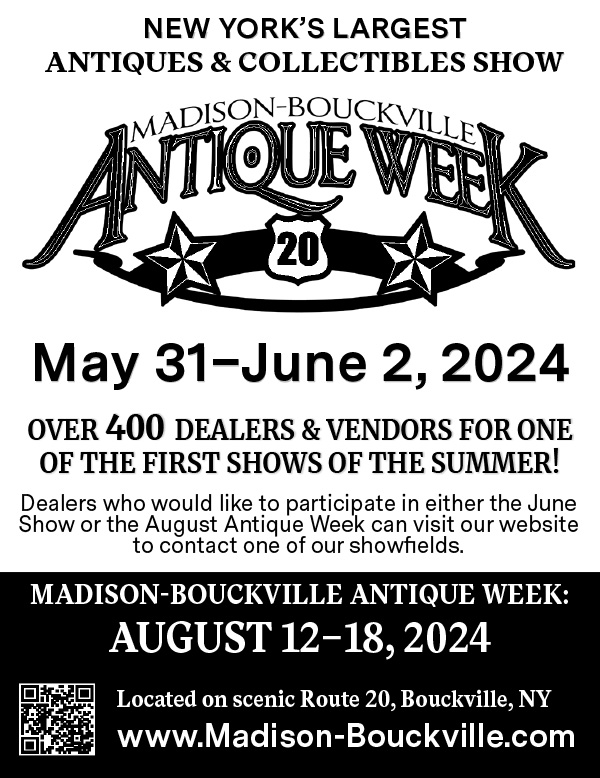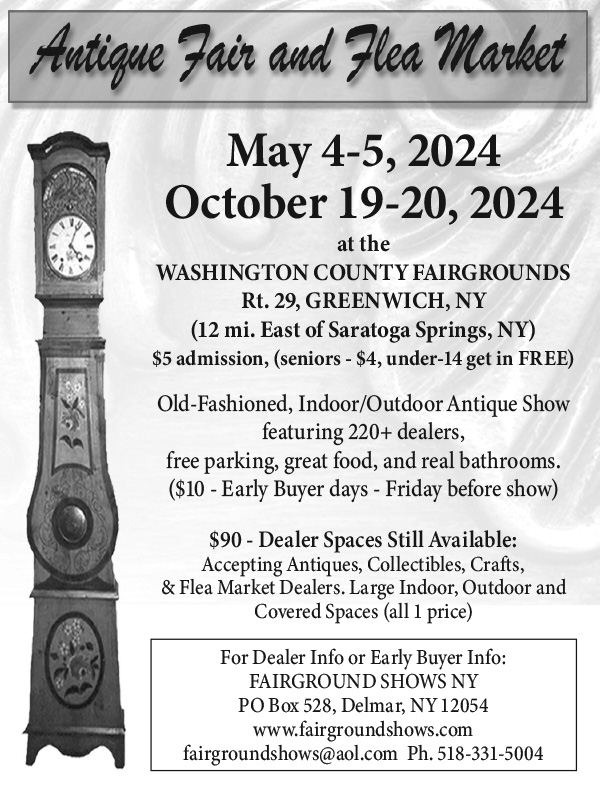Since many of us can’t or shouldn’t go “antiquing” like we did, I’m going to tell you about more fakes and reworked pieces of antique items I’ve seen in the past. Some of these stories are old, but the problems still are around us. When you again can go searching for that special piece, be careful.
I received a call from a young lady who wanted me to tighten a loose leg on a cherry stand. She and her husband were on their honeymoon out of their area and went antiquing. They found the stand and a couple of other items. But only the stand had a problem.
When I saw it, I thought it looked good. However, when I was able to see it up close, I knew they had purchased a fake. It had straight tapered legs. But one rear leg was heavier than the others. It was a bit thicker and also had a slightly different taper. When I pointed that out, they said they hadn’t noticed. Since one of the front legs was loose, I removed the drawer to look at the problem.
That’s when I saw another “red flag.” The drawer was new. Its front looked old. But the rest of the wood was newer and wrong. Whoever had made the drawer used a wood that was incorrect: mahogany. That would not have been used as a secondary wood in a stand like this, if ever. With the drawer out, I was able to show them why I was sure the drawer wasn’t original.
The area of both front legs that was exposed in the opening for the drawer had filed cutouts for the tenons that once had been on the ends of the original apron. Someone had removed that apron, filled the tenon holes, added drawer slides, and fitted a drawer. Now, he had a one-drawer stand, although not original, but worth more than a stand without a drawer.
These folks could have saved their money and avoided owning a fake IF they had noticed the obvious details: one different leg, the wrong wood in the drawer, and the filled tenon holes. They admitted they were new at buying antique furniture and had a lot to learn. They also said they now knew to look VERY closely for anything that didn’t seem quite right.
A few years ago, a couple called to ask me to meet them at a local co-op. They had found a chair they wanted me to examine. It was a circa-1800 Windsor bow-back side chair. It had been painted a very dark green, nearly black. The bow, stretchers, and legs looked good with correct wear. The seat, however, showed no wear. After turning the chair over to look at the underside, we could see why. The seat had been cut and the center 9” or 10” area replaced. Why? Why would the center section of a chair seat be replaced? From the top surface, the seat looked original. This was a puzzle for about five minutes. Then, I realized that I knew why it had been done.
In the past, someone had converted this chair to a closed stool or “potty” chair. Then, more recently, a good woodworker had taken the chair apart, cut out the section with the hole, and replaced it with an old piece of poplar, the same wood as the rest of the seat. He next carved out the top of the seat to match the rest. Then, he had added the paint. What he added was so close to the other color it was hard to notice.
This wasn’t meant to be a fake because he didn’t “age” the new paint or wear away any areas to make it look old. It was a good job done by an honest woodworker to “rescue” an early chair. Although the Windsor wasn’t completely original, it really wasn’t a fake either. But it could have been sold as all original. Instead, it was being sold as, “An old Windsor chair” which it was. This couple bought it and got a good chair at a good price. Even though the seller didn’t know what it was, the new owners now do.
The imagination of some people who “create” many of the “primitive antiques” I see often amazes me. An example was the “primitive small hanging cupboard” a friend of mine bought a few years ago. He found it at an antiques show he always attends that was billed as, “A great country antiques show.” He wanted me to see it so I could tell him what I thought.
When I saw the piece, I felt bad for him. It looked familiar because I’d seen small cupboards like this before. Someone had taken a casement window from an old house basement and built a box around it. The sash had three panes of glass and was hinged from the top. The box was well built using old, clear pine. The backboards were nailed to the cupboard frame with nails from the mid-1800s. The maker had used the straps from two old iron hinges as hangers, one at each end. It was painted on old-looking red. The inside had one shelf that was about half the depth of the piece. It was a good-looking item.
But it was a 20th century, made-up piece. The oldest part was the sash or door. It probably dated from the 1950s, as were its hinges. The hinge parts used as hangers had been oxidized, making it hard to tell how old they really were.
Whoever had made it replaced the glass with old-looking glass and used modern putty as glazing, then shellacked it to make it look old and a little firmer. He also didn’t pay attention to the nails he used. He had early cut nails mostly, but mixed them with a few rosehead examples. I guess he felt that would make the piece look older. He also used too many nails.
Roseheads were expensive. So, woodworkers used only as many as they needed to do the job. Also, the cut nails with rectangular heads were going in different directions. The early cabinetmakers used those nails, making sure the heads all went in the same direction, that being with the grain of the wood. The nails were designed this way in order to keep from splitting the wood.
Since this maker was using old, dry wood, he only had a couple of short cracks. He was a good wood-worker and knew a little about early construction, but wasn’t careful enough to keep from leaving some “red flags” for we “detectives.” The owner wasn’t happy but was pleased to know what he had.
I’ve seen casement windows used to make small cupboards several times, some horizontal like this one and some vertical. The size and designs of the windows always are “giveaways” to me. I once saw an example that had old glass in the frame and early, aged poplar as its wood. That one had been made by a skilled woodworker who had become a faker. It took a lot of detective work to finally discover its true history. It was being shown at an upscale, country antiques show with a very high price. One of my customers wanted to buy it and hired me to see if it was “right.” The owner thought it was a good idea to have it checked out for his potential buyer. So, he wasn’t upset when I pointed out a couple of the things that bothered me. The owner had thought it was pure. He said he was glad I had examined it. And, all of us learned.
A few years ago, I was in a customer’s house looking at a table she wanted some work done on. Once we got the table situation settled, she wanted to show me a couple of items she recently had inherited from an aunt. One was a mahogany chest of drawers. It was English, nice, simple, and in fine condition. The other was an English, mahogany, tall case clock. She said her aunt had purchased it years earlier in New York City. While she was telling me about it, I was looking at it, wondering why something bothered me about it. Suddenly, I realized what it was: the door was wrong. Actually, the door was all right. Instead, it was the keyhole and the escutcheon. They were much too low.
With her permission, I opened the door and looked inside with my flashlight. The mid-case had been cut down, lowered from its lower edge, and then put back together. This made the whole thing shorter. My guess was the clock had been over eight feet tall, as many English clock cases were, and someone figured out a way to shorten the case without removing the feet or the finials. He cut just a few inches out of the center and then put it back together. The person who did it did a good job as far as his woodworking was concerned. But on the inside, I could see new wood where he had cut. Also, he had used some new wood to secure his work. He made no attempt to hide what he’d done. However, if it had not been for the low escutcheon and keyhole, I wouldn’t have suspected anything. She wasn’t concerned about it and said it didn’t bother her. She pointed out that it now has more of a “story.” I like that attitude!
Next month, we’ll look at more fakes I’ve known.




